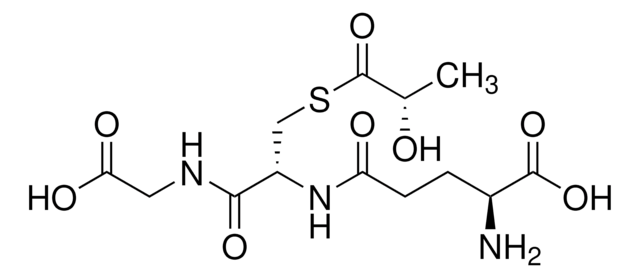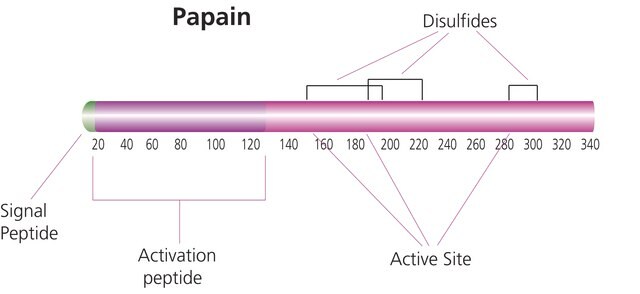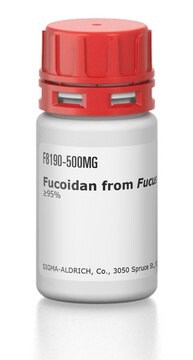G4252
Glyoxalase I from Saccharomyces cerevisiae
Grade IV, buffered aqueous glycerol solution, ≥400 units/mg protein
Synonyme(s) :
S-Lactoyl-glutathione methylglyoxal-lyase (isomerizing)
About This Item
Produits recommandés
Type
Grade IV
Forme
buffered aqueous glycerol solution
Activité spécifique
≥400 units/mg protein
Activité étrangère
glyoxalase II ≤1%
Température de stockage
2-8°C
Vous recherchez des produits similaires ? Visite Guide de comparaison des produits
Description générale
Application
Actions biochimiques/physiologiques
Définition de l'unité
Forme physique
Remarque sur l'analyse
Code de la classe de stockage
10 - Combustible liquids
Classe de danger pour l'eau (WGK)
WGK 3
Point d'éclair (°F)
Not applicable
Point d'éclair (°C)
Not applicable
Équipement de protection individuelle
Eyeshields, Gloves, multi-purpose combination respirator cartridge (US)
Certificats d'analyse (COA)
Recherchez un Certificats d'analyse (COA) en saisissant le numéro de lot du produit. Les numéros de lot figurent sur l'étiquette du produit après les mots "Lot" ou "Batch".
Déjà en possession de ce produit ?
Retrouvez la documentation relative aux produits que vous avez récemment achetés dans la Bibliothèque de documents.
Les clients ont également consulté
Notre équipe de scientifiques dispose d'une expérience dans tous les secteurs de la recherche, notamment en sciences de la vie, science des matériaux, synthèse chimique, chromatographie, analyse et dans de nombreux autres domaines..
Contacter notre Service technique
















